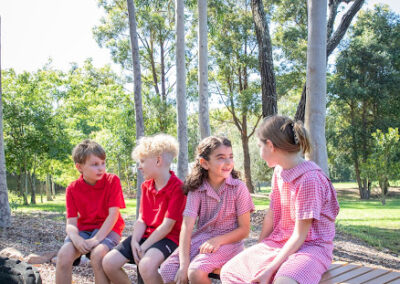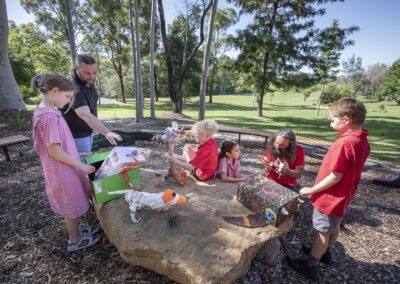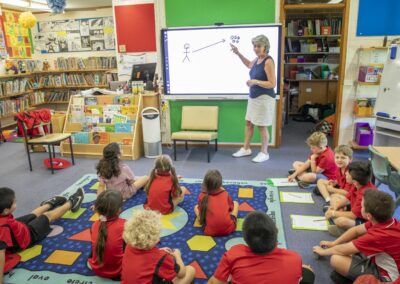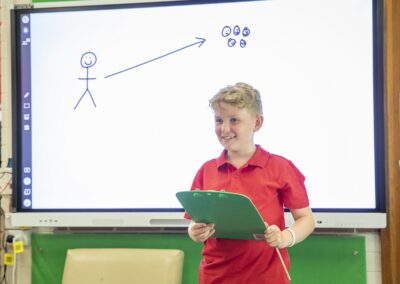
Creating a yarning circle: yarning circle activities
Time Allocation: 45 mins *
Activity Level: Moderate
Introduction
There are many different activities that can take place in your yarning circle. Yarning circles provide opportunities for all to be heard, for discussions to be had and for understandings to be reached.
This series has been created to help ensure your yarning circle is used regularly; and is a space that staff and students alike want to return to again and again and can be incorporated into existing activities or to inspire new ones.
The planner created in this Learning Activity should be displayed in a central location, such as the staff room or main entry, to remind teachers about the yarning circle and the various things that can take place there.
This activity also draws upon the Local Seasons: exploring First Nations weather knowledge Learning Activity in the Learning Centre.
* This is dependent on having already completed the Local Seasons: exploring First Nations weather knowledge Learning Activity, and pre-work such as a list of activities and dates compiled.
Checklist
Instructions
 Step 1
Step 1
Introduction:
Begin this activity with an Acknowledgement of Country. By acknowledging the Land, you are also making a promise that you will recognise the cultural practices of First Nations people.
Explain to your students that today you are going to create a calendar for the yarning circle. This is to help everyone know what the circle can be used for, when it will be in use and to remind everyone that it is there to be used.
Head outside to the yarning circle.
Review the local seasonal knowledge for your area using the Local Seasons: exploring First Nations weather knowledge Learning Activity.
 Step 2
Step 2
Activity allocation:
Working in pairs or small groups, assign students ownership of an activity that could occur in around the yarning circle, such as:
- Junior School Council meetings
- Morning circles
- Yarns around important events in the calendar, for example, NAIDOC Week, Reconciliation Week, National Sorry Day, Mabo Day and reflections on these days
- Observations about seasonal changes
- Planting bush tucker and Indigenous plants around the yarning circle
- Nature study
- Peer Mediation/Restorative Practice
- Brainstorming projects
- School Council meetings
- Traditional Cultural Knowledge workshops or incursions with First Nations educators
- First Nations stories and storytelling.
 Step 3
Step 3
Add to the planner:
Head back inside to the classroom and distribute the coloured card paper and other materials.
Begin adding known dates and information about your local seasons to the planner.
If an idea for the yarning circle doesn’t have a planned date – for example, Peer Mediation or Restorative Practice – use the pens and coloured card to create an information box about how and when it could be used.
Get the students to make additional information boxes outlining what a yarning circle is and reminders of how it can be used respectively.
 Step 4
Step 4
Display and publicise:
Display the planner in a prominent location in your school.
Get your students to plan a short speech for assembly so that everyone in your school knows that the yarning circle is ready for them to use.
Draw on the knowledge learnt in this activity to talk about the many different ways that the yarning circle can be used throughout the year.
Extension Activity
Find out the local Indigenous words for each season and include these on your planner, along with the local Indigenous names of the plants and animals associated with change at this time.